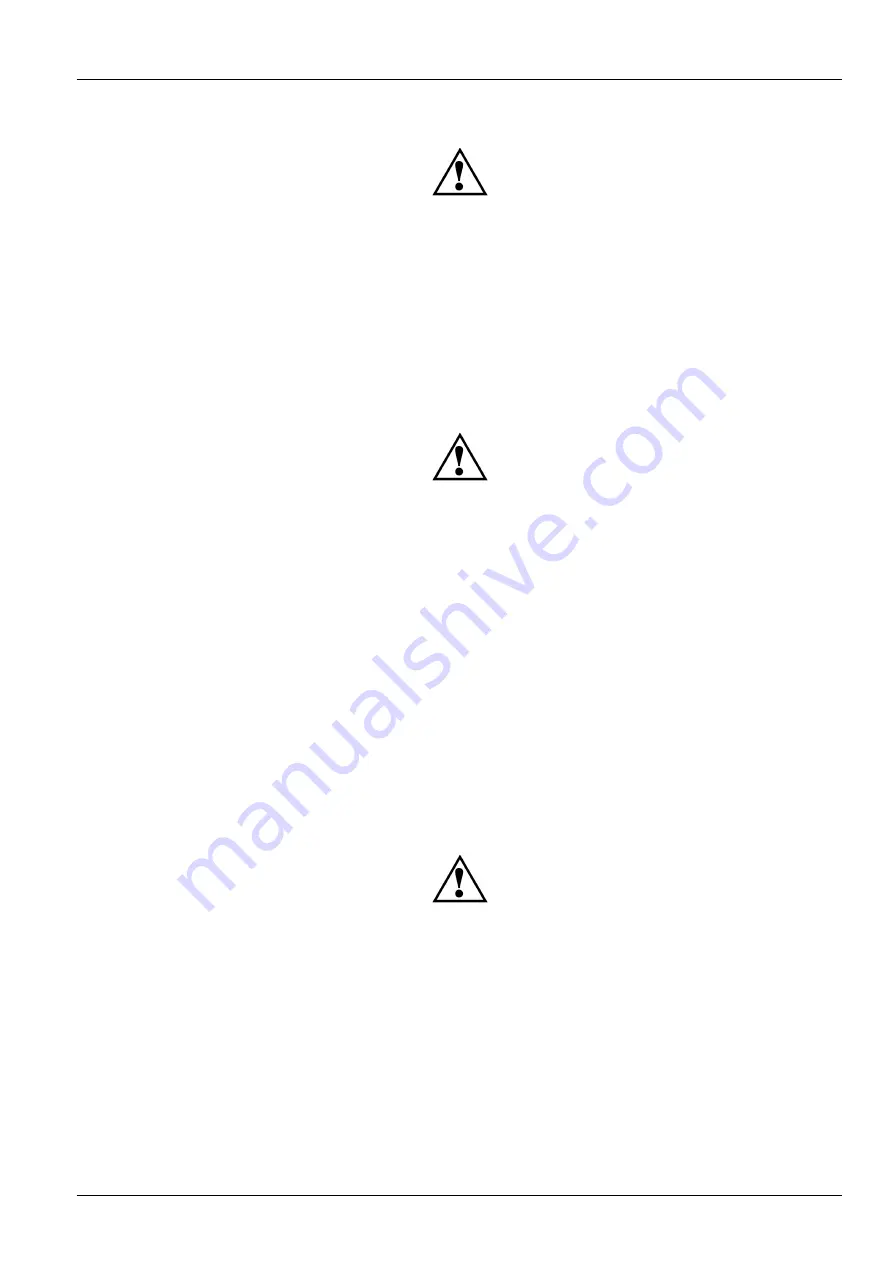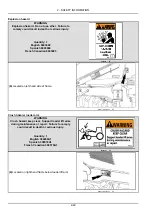
2 - SAFETY INFORMATION
Safety rules - Fuel handling precautions
• Do not smoke or permit open flames while fueling or
near fueling operations.
• Do not fill the fuel tank completely to the top. Allow
room for expansion.
• Clean up spilled fuel immediately and dispose of con-
taminated material in an environmentally correct man-
ner.
• Tighten the fuel tank cap securely. Should the fuel
cap be lost, replace it only with the original manufac-
turer's approved cap. Use of a non-approved cap with-
out proper venting may result in pressurization of the
tank.
• Never use fuel for cleaning purposes.
• Use the correct fuel grade for the operating season.
Safety rules - Hazardous chemicals
• If you are exposed to, or come in contact with,
hazardous chemicals you can be seriously injured.
The fluids, lubricants, paints, adhesives, coolants,
etc. required for the function of the machine can be
hazardous.
They may be attractive and harmful to
domestic animals as well as humans.
• Material Safety Data Sheets (MSDS) provide informa-
tion about chemical substances within a product, safe
handling procedures, first aid measures, and proce-
dures to be taken in the event of a spill or accidental
release. MSDS are available from your dealer.
• Before you service the machine, check the MSDS for
each lubricant, fluid, etc. used in the machine. This
information indicates the associated risks and will help
you service the machine safely. Follow the information
in the MSDS, on manufacturer's containers, as well as
the information in this manual when servicing the ma-
chine.
• Dispose of all fluids, filters, and containers in an envi-
ronmentally safe manner according to local laws and
regulations. Check with local environmental and recy-
cling centers or your dealer for correct disposal infor-
mation.
• Store fluids and filter in accordance with local laws and
regulations. Use only appropriate containers for the
storage of chemicals or petrochemical substances.
• Keep out of reach of children or other unauthorized per-
sons.
Safety rules - Lifting and overhead loads
• Never lift loads in excess of capacity.
• Carry loads in recommended positions for maximum
stability.
• Never use buckets, forks, etc. or other lifting, handling,
or digging equipment to lift persons.
• Do not use raised equipment as a work platform.
• Know the full area of movement of the machine and
equipment and do not enter or permit anyone to enter
the area of movement while the machine is in operation.
• Never enter or permit anyone to enter the area under-
neath raised equipment. Equipment and/or loads can
fall unexpectedly and crush persons underneath it.
• Do not leave equipment in raised position while parked
or during service, unless securely supported. Hydraulic
cylinders must be mechanically locked or supported if
they are left in a raised position for service or access.
• Buckets, forks, etc. or other lifting, handling, or digging
equipment and its load will change the center of gravity
of the machine. This can cause the machine to tip on
slopes or uneven ground.
• Load items can fall off the bucket or lifting equipment
and crush the operator. Care must be taken when lifting
a load. Use proper lifting equipment.
• Use the recommended machine ballast and counter-
weighting.
2-7
Summary of Contents for 570NXT
Page 8: ......
Page 24: ...1 GENERAL INFORMATION 1 16 ...
Page 88: ...3 CONTROLS INSTRUMENTS 3 28 ...
Page 142: ...6 WORKING OPERATIONS 6 34 ...
Page 193: ...7 MAINTENANCE Cylinder closed end Two total one on each side RCPH10TLB258AAF 3 7 51 ...
Page 252: ...7 MAINTENANCE 7 110 ...
Page 257: ...8 SPECIFICATIONS Machine overall dimensions 8 5 ...
Page 259: ...8 SPECIFICATIONS RAIL12UTL0182GA 1 8 7 ...
Page 260: ...8 SPECIFICATIONS 8 8 ...
Page 262: ...8 SPECIFICATIONS RAIL12UTL0182GA 2 8 10 ...
Page 272: ...9 ACCESSORIES 9 4 ...
Page 279: ......
































